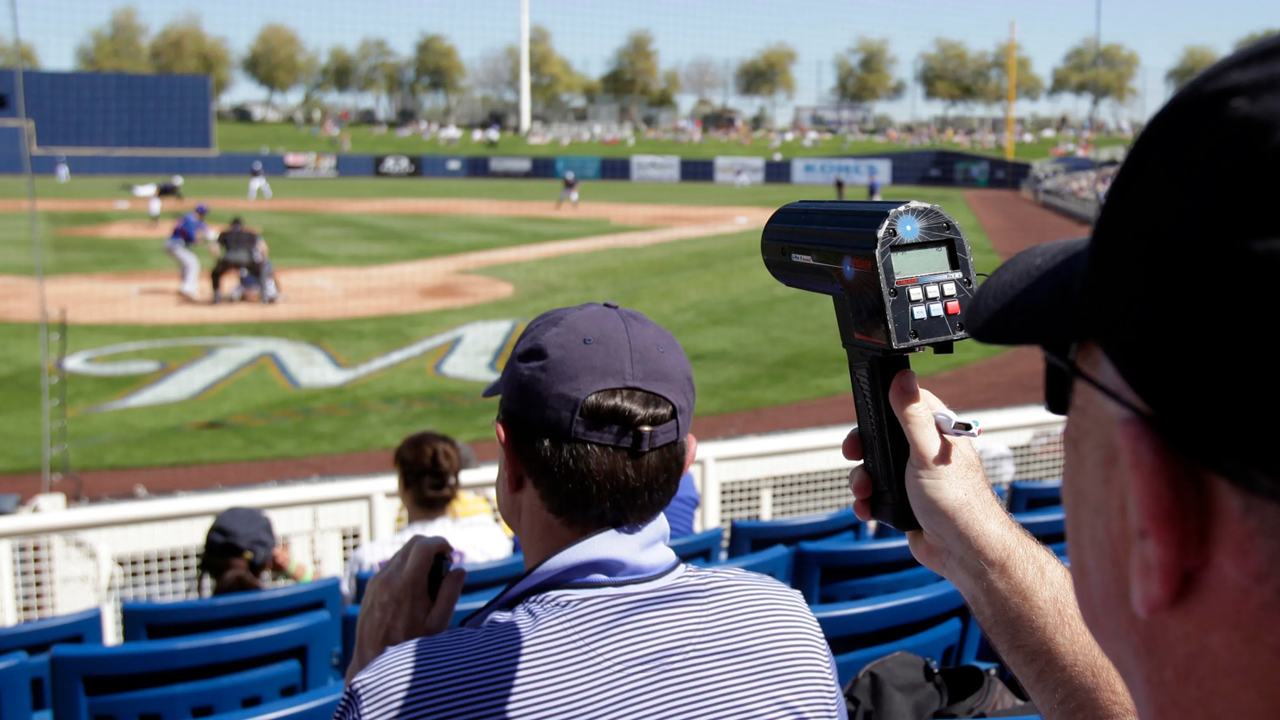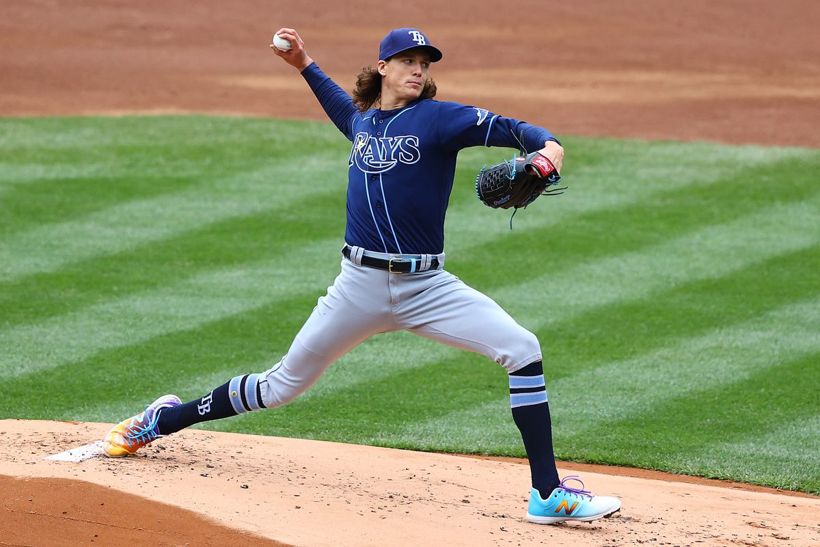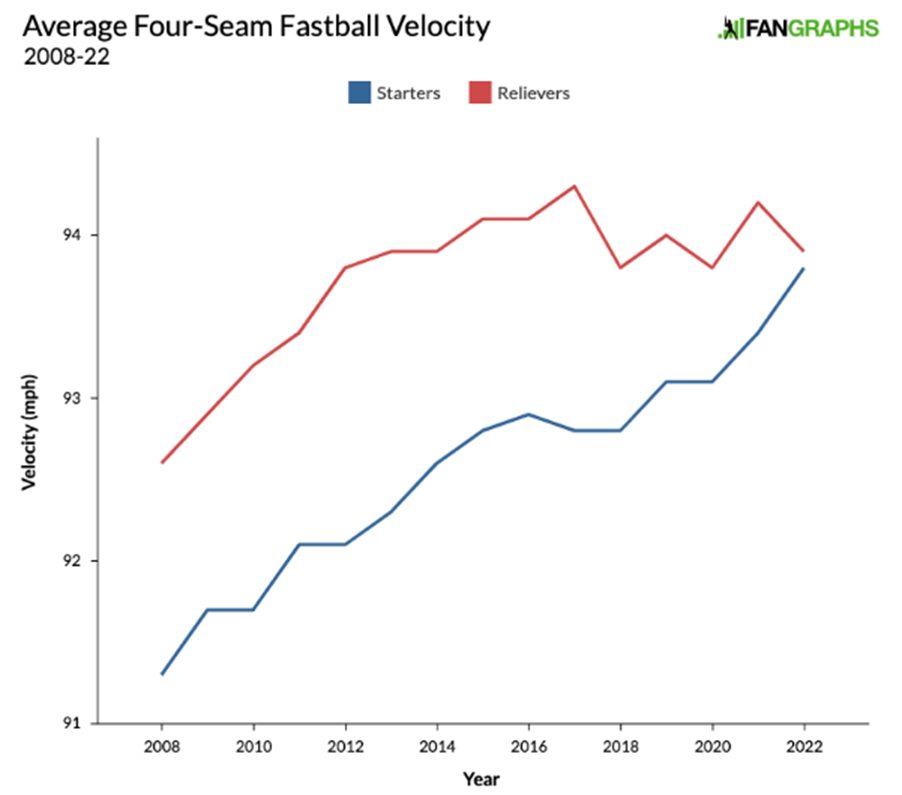
Do you want to play college baseball? What do you NEED to get there? For good or bad, after being in and around baseball training, development and recruiting for over 10 years, I can tell you with 100% certainty that…
Pitching velo is the one and only “initial” differentiator. Before you jump up and down, please note that I said one and only “initial”, not the only differentiator.
-
- Yes! You still need to throw strikes!
- You need to command the ball!
- You need to be able to throw to both sides of the plate!
- You need to get guys out!
- You need to have grit and much more!
At the end of the day, every coach or scout wants everything, but, if you DO NOT have enough velo for the level of play you’re aspiring to, you WILL NOT make the cut. That is the truth that few speak out loud and when someone does, the “velocity isn’t everything” police come looking for you with hatchets and the guillotine.
Where Does Velo Really Come From?
Now that we got that out of the way, let’s talk about where velocity comes from? It’s much much more than just pitching mechanics. Here’s a list:
1. You need to be strong – We’re not talking beach muscle strong, we’re talking about use-able, FAST-TWITCH strength. How many successful baseball players do you know that look like bodybuilders? Training for baseball requires a specialized program designed to increase Max strength, but only to a point where speed is not compromised.
2. You need to be explosive – This means not only being strong, but also being able to apply your strength quickly. Whether you are a pitcher or a position player, your velo comes from delivering your strength as quickly as possible. We all know that an athlete that is strong and cannot move quickly, cannot be explosive. You need both strength and acceleration to efficiently produce power as a baseball player.

3. You need to be mobile and flexible – Mobility is huge for baseball players. Being too tight or too lax in the wrong place can put limitations on your performance, while putting you at a higher risk of injury. Highly elastic guys that are like rubber bands, can sometimes be deceiving with their strength and power. They may not generate as much force, but they can do it very quickly.
4. You need to have good sequencing in your movement patterns – This is about how efficiently you are transferring power proximal to distal. This means from the core to the ground and back up starting with the lower half and moving up the kinetic chain. High-level pitchers may each use look different in their delivery, but they all are extremely efficient at transferring force up the chain. This is one reason why their 90+ mph pitches look so effortless.
5. You need to have good mechanics – Not much else to say here. Good mechanics are paramount. They make you an efficient thrower and reduce torque on the elbow and shoulder. Without great mechanics, it’s harder to reach higher velocity ceilings.
6. You need to be consistent in your training – I am not referring to the short term. I am referring to the medium and long-term. Building noticeable velocity improvements takes time and requires consistency in strength training as well as training on the technical side. Often, it requires more patience that we have in us, but if you are training right and give it time, velo will come.
7. You need to eat – Your body needs fuel to get stronger. Proper nutrition should be part and parcel to your training. If you want to add 10-15 lbs. muscle mass this off-season, you need to eat more and eat often. For some it’s extremely difficult to add weight. If you’re in that category, then ask yourself “How Badly Do I Want it?”
Sometimes folks see a relatively lighter pitcher on TV that does not look exceptionally strong, yet he throws the ball hard. They question whether strength is relevant. First, always check weight and height. Pitchers’ appearances on TV can be very deceiving. Second, if they happen to be on the lighter side, then they do everything else exceptionally well. Big Kudos to them but they are the exception or “outliers” as we know it. The average MLB pitcher is 6’2″ and 210-215 lbs. Believe me, most guys who throw gas are not on the lighter side.
So, back to my initial commentary, velocity is the differentiator in recruiting. It is true that MLB guys are throwing fewer fastballs as a percentage. In 2002, 65% of thrown pitches were fastballs. In 2022, it was just under 50% (source pitcherlist.com).
Now let us look at what has happened to velocity itself…

Average 4S fastball is up from 91+ mph in 2008 to just under 94 mph in 2022. Basically, this historical pattern is saying that you need velo, but now that you have more of it, you do not have to throw it as often. Perhaps, the threat of throwing a higher velo FB has made the other pitches more effective.
Bottom line is that in today’s game at every level, you need to be able to throw hard before the other considerations get in the mix. Like I said earlier, it is the initial differentiator.
In my experience, after watching nearly a decade of young athletes training at RPP, and watching guys throw harder and harder, it’s fair to say that any average athletic high school ball player, with some dedication, can get to the high 70s and low 80s in velocity off the mound. Unfortunately, in today’s recruiting environment, that is not a recruitable velocity.
So, where does that leave us? It is simple, train holistically. Train everything. Go back to the list above and find a training facility that knows what they are doing to help you develop all aspects of your craft. We call it “Closed Loop Training”, everything under one house, so all your coaches can communicate with each other and make you the best that you can be.
About ten years ago, when a single high school pitcher threw over 90 mph, it was a big deal. He was likely a top round draft prospect. In the past two years alone, through our holistic approach to training, we’ve successfully helped many high school athletes get there and there are many more on the way. Our results speak for themselves.
By Bahram Shirazi and Nunzio Signore (Owners at RPP Baseball)
If you’d like to be placed on our email list please enter your email address below!

